The Hand Prints of Dr. Albert Einstein-Juniper publishers
Journal of Forensic Sciences & Criminal Investigation
Opinion
The name Albert Einstein is synonymous with taking a step in another direction. When viewing the hand prints of Dr. Einstein, we should look at them from a different perspective. In this view, I shall focus on the element of chance rather than replication in recording of the dermal ridge arrangements.
It is understood that when taking impressions, it is not possible to achieve two or more identical copies of the dermal ridge configurations. This is due to the constraining force used to reproduce the ridge formations. Notwithstanding, all impressions taken from the hand will display differences in contour and contrast with regard to the ridges and furrows.
We do not know for certain the number of times impressions had been taken from the hands of Dr. Einstein. If there are additional documents available, we could examine one specimen next to the other. Nor can we say that every record taken would display the same chance phenomenon of abstract appearance. What we do have is this copy and something can be said about the record in hand. The impressions of Dr. Einstein encompass images when viewed in the abstract perspective. I have noted subtle images that appear on the digits and palms. A look from a different position provides the topographic like view of a landform.
A particular abstract observation of the impressions is perceptional and not limited to one individual. View the handprints of Dr. Einstein and see them from another dimension [1] (Figure 1, 2 and Table 1).
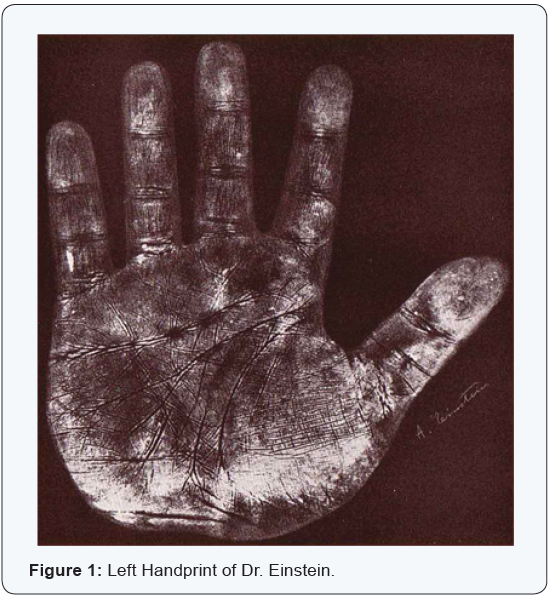
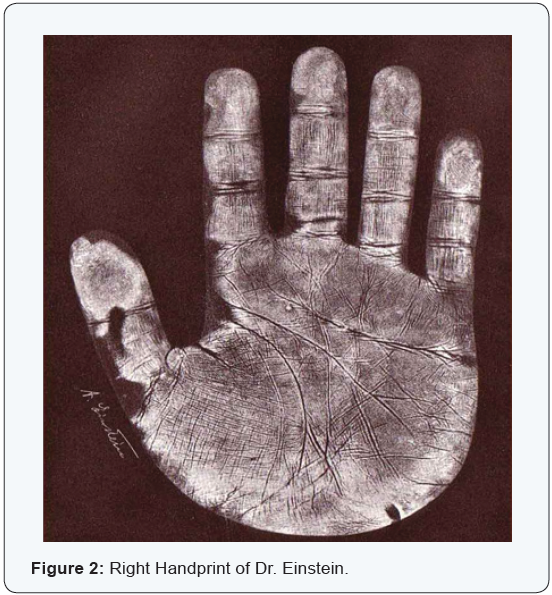

Dr. Einstein’s Primary Classification was 8 over 16 (Figure 3). This code has been calculated with the following numerical values assigned to the digits:
1=2, 2=4, 3=8, 4=1, 5=16, 6=1, 7=4, 8=8, 9=2 and 10=16
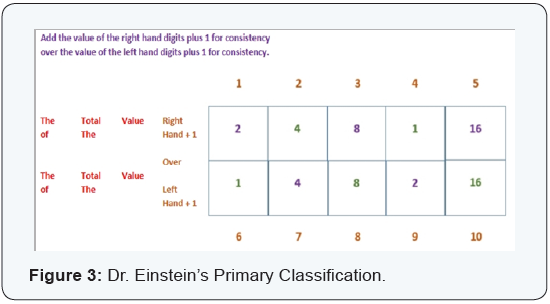
The geometric design which represents Dr. Einstein’s Primary Classification on a multi-sequential Primary Classification Chart; it includes 8 over 16, 25 over 25 and 25 over 1 (Figure 4).
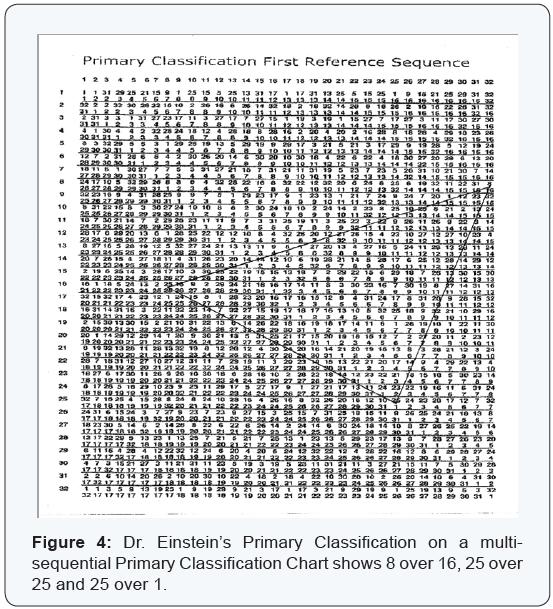
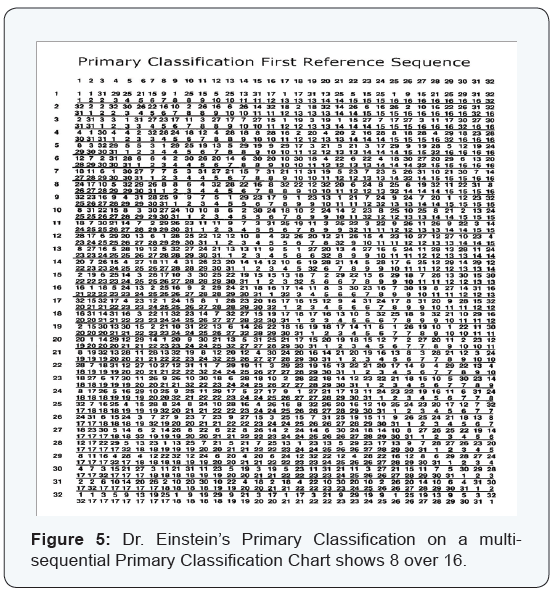
Each digit which displays a whorl pattern receives the numerical value assigned. The total value of the right hand digits (displaying whorls) plus 1 is the numerator. The total value of the left hand digits (displaying whorls) plus 1 is the denominator. Therefore, the appearance of a whorl pattern on the following digits; 1,2,4,6,7,8 and 9 provides the primary classification of 8 over 16 [2,3] (Figure 5).
To Know more about: Journal of Forensic Sciences & Criminal Investigation
To Know more about our Juniper Publishers

Comments
Post a Comment